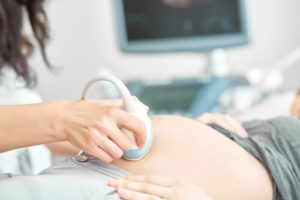Cephalopelvic Disproportion

Cephalopelvic disproportion, or CPD, is a situation in which an unborn child’s head is too large to enter or pass through the birth canal. Although rare, CPD is one of many reasons why a woman’s labor fails to progress, often making a normal, spontaneous vaginal delivery impossible or nearly impossible to complete.
Many times, the complications associated with CPD could have been avoided had certain risk factors been immediately identified and addressed. You deserve more from those who failed to keep you and your child safe. Please call (800) 462-5772 for a free case review with Stern Law, PLLC today.
What are the causes and risk factors associated with cephalopelvic disproportion?
In the United States, about 1 in 250 births involve a child diagnosed with CPD. There are a number of reasons why children develop the condition. The most common factor associated with cases of CPD is a mother with abnormally high maternal sugar levels from gestational diabetes or diabetes mellitus.
What are the signs and symptoms of cephalopelvic disproportion?
There are a number of tell-tale signs that a child is suffering from CPD. They are:
- Prolonged labor – This refers to a situation where labor, for whatever reason, is not progressing. One of the major reasons why some woman’s labor cannot progress is due to CPD.
- Fetal distress – If a child is exhibiting a low fetal heartbeat and other similar symptoms associated with a lack of oxygen, he or she may be suffering from fetal distress, which can be caused by CPD.
- Large fundal height – Fundal height is a measurement of the distance between the pubic bone and the top of your uterus. This is often used to determine whether a child suffers from macrosomia, which can also lead to CPD during delivery.
- A higher than average volume of amniotic fluid – Medically referred to as polyhydramnios, too much amniotic fluid (the fluid that surrounds and protects a baby while in utero), may be indicative that your child is overly large, sometimes leading to CPD. Specifically, the amount of amniotic fluid reflects an unborn child’s urine output – the larger the child, the more urine he or she produces.
If you are experiencing any of the above signs and symptoms of CPD, it is important for your doctor to assess the extent of your child’s condition, determine a potential underlying cause, and discuss with you all of your labor and delivery options.
Methods of diagnosing cephalopelvic disproportion
Unfortunately, doctors cannot always predict whether a child will be born with CPD. However, there are several methods that medical professionals can use to increase the chance of catching the condition and taking proactive measures to prevent complications. These are:
- Pelvimetry by MRI – This procedure is used to examine the dimensions of a woman’s pelvis, the baby’s position in the womb, and the tissues surrounding a mother and her baby.
- Clinical pelvimetry – This is process by which a doctor or other type of medical professional uses his or her hands, sometimes with a pelvimeter, to determine the size of the birth canal.
- Ultrasound – This is a procedure that allows a medical professional to examine the size and shape of a child’s head, the measurements of which are compared to standardized growth charts to determine the potential risk of CPD.
- X-ray or CT pelvimetry – This is used to determine the dimensions of a mother’s pelvis and the diameter of an unborn child’s head. These are rarely performed, as there is a great risk of harm to an unborn child due to radiation exposure.
In the event that a case of CPD is suspected, a doctor should examine a women for the various risk factors associated with the condition, such as testing her blood glucose to assess whether she is suffering from gestational diabetes. Additionally, a health care provider may also conduct non-stress testing to monitor the well-being of an unborn child thought to be overly large. This test measures the child’s heart rate in response to his or her movements and may be repeated regularly if your doctor believes your child’s excess growth is caused by a maternal condition.
What are the treatment options for cephalopelvic disproportion?
If your medical professional suspects that your unborn child has CPD, a vaginal birth may not be a viable option. In the event that your doctor feels that a vaginal delivery is too risky given a case of CPD, he or she will order a cesarean section (or c-section). If a c-section is ordered before the 39th week of pregnancy, your doctor may conduct an amniocentesis to determine the extent of your child’s lung development before going ahead with delivery.
If a vaginal delivery has progressed to the point where waiting to perform a Cesarean section (C-section) would be harmful to a child, or if vaginal delivery is still a possibility, a medical professional may have the mother squat or assume another type of upright position. This can increase the pelvic capacity by about 30%. A doctor may also perform a symphysiotomy during a vaginal birth, which is a procedure that involves the cutting of a woman’s pubic bone in order to free a child’s head that is lodged in the birth canal due to CPD.
After your child is born, he or she should be assessed for birth injuries, low blood sugar, and a certain blood disorder known as polycythemia which affects a baby’s red blood cell count. In the event of complications during labor and delivery, a child may be kept for monitoring and treatment in the neonatal intensive care unit (NICU) . As your child progresses in age, he or she should be regularly monitored for insulin resistance, obesity and other CPD-related complications that may arise.
What are the complications associated with delivering a child with cephalopelvic disproportion?
CPD can cause significant complications for a mother and her child, both during labor and after delivery. The scope of complications associated with this condition for a mother are as follows:
- Labor progression problems – CPD may cause a child to become lodged in the birth canal, potentially requiring the use of forceps and other invasive devices and methods to free the child. This can lead to injuries to the birth canal such as lacerations, vaginal and perineal tearing, excessive bleeding during delivery and a fractured tailbone.
- Uterine rupture – If you had a cesarean section in your previous pregnancy or major uterine surgery, CPD increases the risk of uterine rupture. Uterine rupture is a rare, yet serious, complication in which the uterus tears along the scar line of a previous cesarean section or uterine surgery. Oftentimes, an emergency c-section is necessary to prevent life threatening complications associated with this serious complication.
- Bleeding post-delivery – CPD increases the risk that a woman’s uterine muscles will not properly contract after giving birth, referred to as uterine atony (a condition that involves the loss of tone in the uterine musculature). This can cause excessive bleeding post-delivery.
For a child, complications from CPD could include interruption to the oxygen supply and injury to the head, neck, and shoulder area due to misuse of forceps or vacuum extractors, potentially resulting in:
- Hemorrhaging
- Cerebral palsy
- Developmental delays
- Seizure disorders
- Paralysis
Medical negligence and cephalopelvic disproportion: What you should know
The complications associated with CPD are caused by a multitude of different factors, which may involve the following cases of medical negligence (whether caused by a doctor, hospital or medical staff):
- Failure to diagnose a pregnancy related medical condition such as gestational diabetes, a precursor to macrosomia and CPD
- Faulty or improperly used fetal monitoring equipment to determine whether a child is suffering from CPD-related fetal distress
- Failure to diagnose and treat pregnancy, labor and delivery complications associated with CPD
- Failure to detect and address CPD in an unborn child
[videosingle id=”10492″ width=”95%” height=”400″ /]
If you gave birth to a child with CPD who sustained otherwise preventable injuries due to medical negligence, you may wish to consider your legal options. Please call Stern Law, PLLC at (800) 462-5772 for a free consultation.







